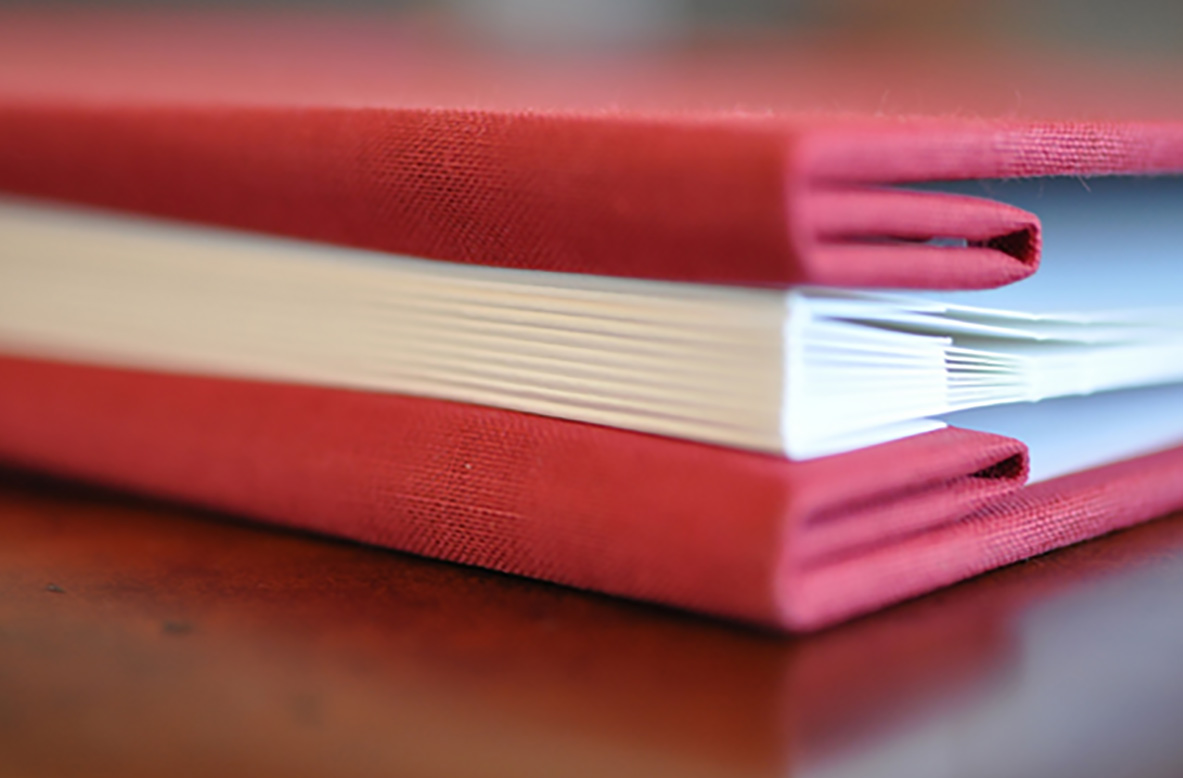
26 Aug GuideLines: Popular Binding Techniques
In this addition of GuideLines we are taking a quick look binding techniques for multiple page documents. Binding options are often overlooked at the project planning stages and therefore, unfortunately, default to the cheapest available option.
Binding techniques not only impact the aesthetics of the final product, but also its functionality and the set up of the artwork files. There are a wide range of techniques to suit different budgets and other considerations such as the shelf life of the product.
Below we’re taking a closer look at a range of common print binding techniques in price descending order. The next time you’re planning a brochure, report or magazine it’s worth spending a little time to consider binding options in the early project stages.
HIGHER COST OPTIONS

Case binding is one of the more expensive print binding techniques that can be found on most hard back books. Case binding is most typically used for books which have 80 pages or more and creates a strong, high-quality finish. The pages are collected in ‘signatures’ then sewn along the spine and glued onto the book block. The process is quite complex; and therefore costly, so is mainly used for publication which need to withstand regular use and last a long time, such as reference and textbooks.

Screw post binding is another high cost technique that has a distinct look and portrays a premium quality. As the name suggests holes are punched into the pages and screws hold the pages in position between two covering boards. It is a popular method for publications that may require changes to individual pages over time and is often used in artists & photographers portfolios.
Whilst the initial print costs are high the ability to update contents mean it can often be a cost effective solution in the long term and looks more impressive than a standard ring binder.

A rarely used technique with a unique look is the classic Japanese stab binding. Four or more holes are punched at the spine edge of the pages and thread (traditionally silk cord) is stitched through in loops.
The exposed stitching gives a bespoke, folksy aesthetic, and whilst the technique uses no glue or folding, it has relatively high production cost due to its hand made nature.
MID COST OPTIONS

Perfect binding is the most common technique used for commercial paperbacks and magazines as it provides a large cost saving when compared to case binding. The method simply involves folding, trimming and gluing the page block to the the spine of the cover stock. For most moderate use publications the process is sufficient to keep all pages secure with a neat finish. For certain paper stocks or heavy use publications there is an alternative called PUR binding which utilises the same techniques but with a stronger adhesive for added durability.

The default for most small publications and brochures is saddle stitched (stapled) binding. Saddle stitching simply involves folding the pages and placing them inside the cover stock, with two or more staples punched through the fold along the spine.
Its simple process makes it an affordable option and can usually be used for publications up to around 96 pages, dependent on the weight and quality of the paper stock.

Wire-O binding utilises multiple holes in the left edge of the page with a double looped wire securing them together. It has advantages over similar binding techniques; such as spiral and comb binding, as it allows the publication pages to lie completely flat when opened.
It is one of the most durable and quick methods of print binding and is used regularly for recipe books and professional reports.
LOW COST OPTIONS

At the lower end of the price spectrum are the standard metal ring binders we are all familiar with. Two or more holes are punched in the paper and the metal clasps of the binder open to allow the pages to be inserted.
Whilst often overlooked for professional publications due to its cheap connotations, ring binding can be an ideal solution providing the clasp and binder cover are of high quality. There are a number of providers manufacturing binders with custom materials and special finishes such as embossing and foil blocking.

Plastic comb binding is the cheapest and quickest option for DIY binding but unfortunately it looks it! To give comb binding its dues it does have a place for quick turnaround, low cost publications; such internal reports and presentations. With office machinery available for less than £50 it’s a very low cost option, but for professional looking/ customer facing publications it is best avoided.



